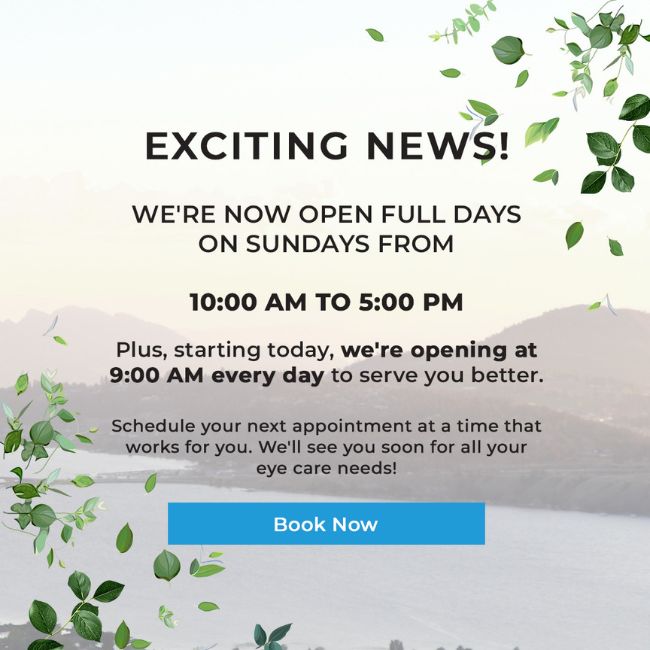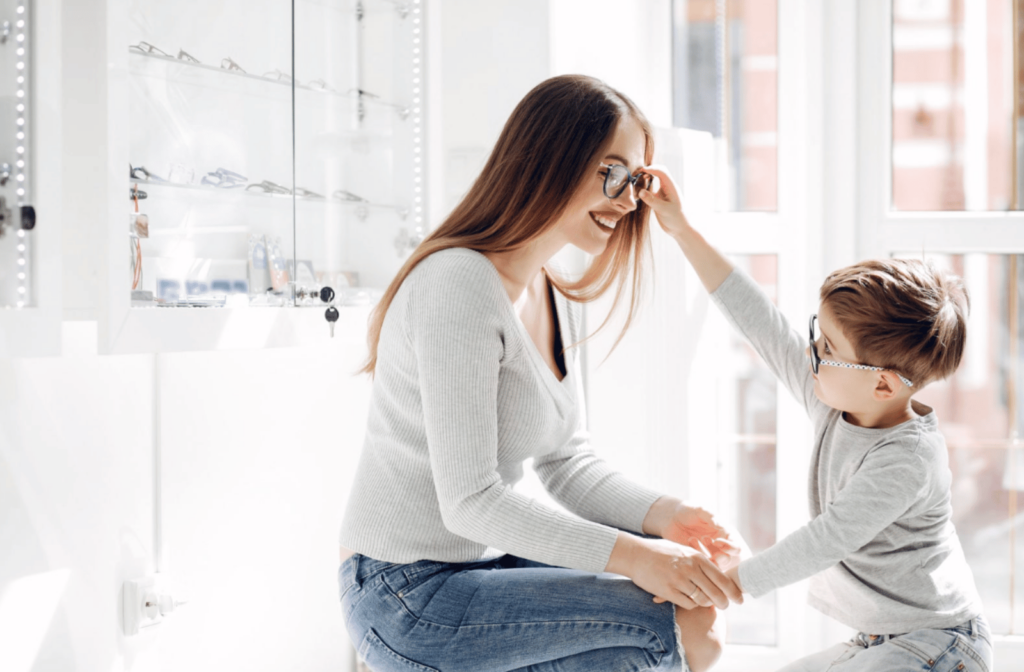Myopia and hyperopia are simply other names for nearsightedness and farsightedness. Borrowed from Ancient Greek and Latin, they refer to some of the most common types of vision conditions: refractive errors. Fortunately, once diagnosed, an optometrist can correct these errors with eyeglasses or contact lenses.
Myopia is when distant objects appear blurry, while hyperopia is when nearby objects are blurry. Despite effectively being the opposite of each other, they have plenty of similarities. For example, they are both typically first present in kids, which is why regular eye exams are essential for growing children.
What Is Myopia?
Myopia, also known as nearsightedness, is an eye condition where people can see nearby objects clearly, but distant objects appear blurry. It usually occurs when the cornea is too curved, which causes light entering the eye to focus in front of the retina instead of on it.
Between myopia and hyperopia, hyperopia is the more common condition. But, 30% of the Canadian population already has myopia, and that number keeps rising. It’s expected that over half of the population will be nearsighted by 2050.
The eye has many components, but we’re going to focus on three: the clear cornea at the front, the lens inside, and the layer of light-reactive cells at the back called the retina. In a healthy eye, light rays pass through the cornea and the lens, being refracted (bent) before converging on the retina. This gives our brain the data it needs to create an image.
With myopia, the eye has either grown too long from the cornea to the retina or the cornea is too curved. These both result in the same outcome; Light rays no longer come together on the retina but converge in front of it. As a result, distant objects become blurry while nearby objects remain clear.
Myopia typically starts in kids—whose eyes are still growing—and may continue to progress until they become adults. Myopia control is a management plan that seeks to slow this progression since untreated myopia can worsen and increase the risk of severe eye issues such as:
- Glaucoma
- Cataracts
- Retinal detachment
What Are the Risk Factors for Myopia?
Some factors that may increase someone’s risk of developing myopia as a kid include:
- Family history of myopia
- Not enough time spent outdoors
- Too much screen time
While it does appear that parents being nearsighted may increase the risk of their kids developing the condition, it’s not a sure thing. A kid could be myopic even if their parents have perfect vision—That’s why experts recommend children have yearly eye exams until they’re 19.
What Is Hyperopia?
Hyperopia is, in many ways, the opposite of myopia, so it only makes sense that its causes are the opposite as well. Hyperopia occurs when the eye is too short or the cornea is too flat. This means light rays still can’t converge on the retina, but they come together behind the retina. This makes close-up objects appear blurry while distant objects remain clear.
Almost all infants are born highly hyperopic, and their vision normalizes during healthy growth and development, a process called emmetropization. Emmetropia is what eye doctors refer to as “normal visual status”, which is a very low degree of hyperopia. Children usually reach this point around grade 2.
Emmetropia allows for very easy focus at distance and near without the need for any vision correction. As hunter-gatherers, this type of vision was optimal for humans who needed to both spot predators and prey on the open savanna and see close range to use tools and forage and communicate with others.
Hyperopia may only become a problem in high amounts where it can significantly impact your ability to see. Reading activities are generally more difficult, visual fatigue happens much earlier, and learning can be hindered.
Some kids with moderate to high hyperopia can even be misdiagnosed with ADHD. Another concern is that severe hyperopia is a leading risk factor for developing amblyopia, also known as lazy eye.
What Are the Risk Factors for Hyperopia?
Eye experts generally consider hyperopia genetic, meaning if a parent is farsighted, there’s a greater risk their child may be, too. But since hyperopia can present in kids whose parents aren’t, researchers believe some environmental factors may be at play, though they haven’t been well-studied.
Correcting Myopia & Hyperopia
An optometrist can’t cure myopia and hyperopia, but we can correct their blurry symptoms, and, in the case of myopia, we may control its progression.
Myopia Control
Myopia typically begins when people are young and worsens until they reach adulthood. For your child, this means the earlier an optometrist detects it, the earlier they may be able to slow it through myopia control.
Myopia control isn’t one treatment. Instead, it’s typically a range of tools designed for your child’s benefit. These tools might include specialty contact lenses, such as MiSight lenses or Ortho-k lenses, specialty eyeglasses like the Stellest Lens, or low-dose Atropine eye drops.
Eyeglasses & Contact Lenses
Eyeglasses and contact lenses are the go-to choices for correcting vision issues for many Canadians. They can correct myopia and hyperopia, as well as other refractive errors such as astigmatism and presbyopia.
Part of an eye exam is figuring out your prescription, though contact lenses require a specialized fitting to make sure you get lenses that can work for your eyes.
Laser Eye Surgery
You have additional options if you’re an adult with a refractive error. Laser eye surgery is a popular procedure for people tired of dealing with lenses. It changes how light travels through our eyes by reshaping the cornea with lasers.
A consultation with your optometrist can help you determine whether laser eye surgery is right for you.
Seeing the Difference
Myopia, hyperopia, nearsighted, farsighted—whatever’s affecting your clear vision, Orchard Park Optometry has a dependable team ready to help. A comprehensive eye exam is one of the best ways to track your and your children’s visual health.
Questions are good to ask, and we love to hear them. If you have more questions or you’re ready for your next eye exam, call us today and book an appointment in Kelowna!





